Bulk Storage Choices
By Thomas W. Hedrick
Heading 2
Bulk storage requirements in processing and distribution facilities can range in capacity from a few thousand tons to several hundred thousand tons. Years ago, materials were piled outside, and automation was accomplished by adding a reclaimed tunnel with mechanical feeders. Compliance with today’s environmental regulations, energy use concerns, and quality control issues require that storages be properly covered.
PEC Consulting Group assists its customers in finding practical and economical choices for their bulk storage needs.
First to be determined is the degree of automation of the loading and reclaim systems and other special materials handling process requirements.
In the case of non-sticky materials, simple gravity flow allows the use of tunnel systems with bulk feeder points similar to Figure 1. Gravity flow also works well when considerations for storage do not involve combustible materials (for example, coal, coke, or wood pellets). Tunnel withdrawal is an economical form of reclaiming from a storage facility.
Figure 1. Two Tunnels, Gravity Feed
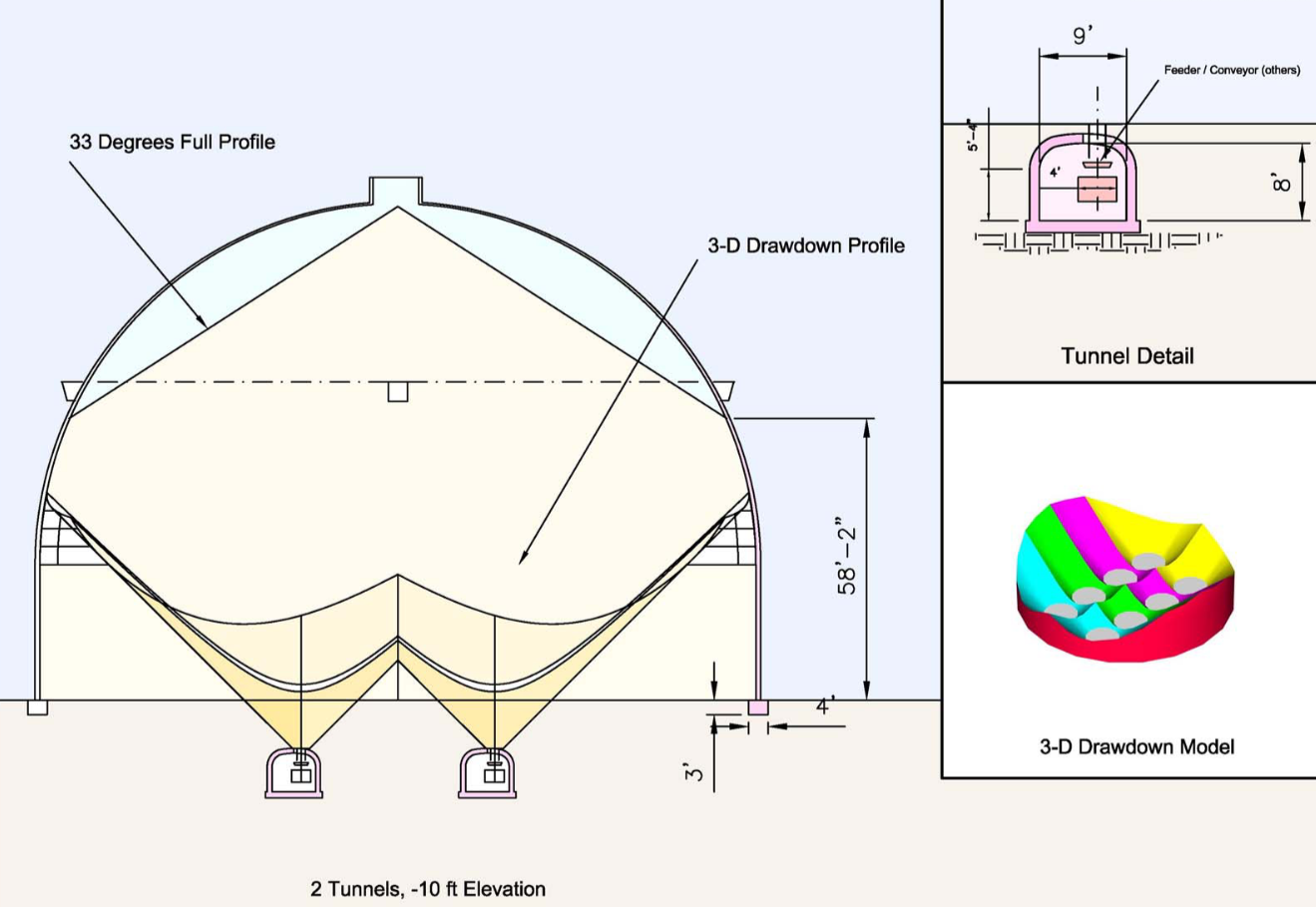
Sticky solids, and those that suffer size degradation like pebble lime and salt, require special extraction methods. Figure 2 shows one way to extract materials by activating the flow with a specialized feeder.
Figure 2. Drawdown Hopper With Mechanical Agitation
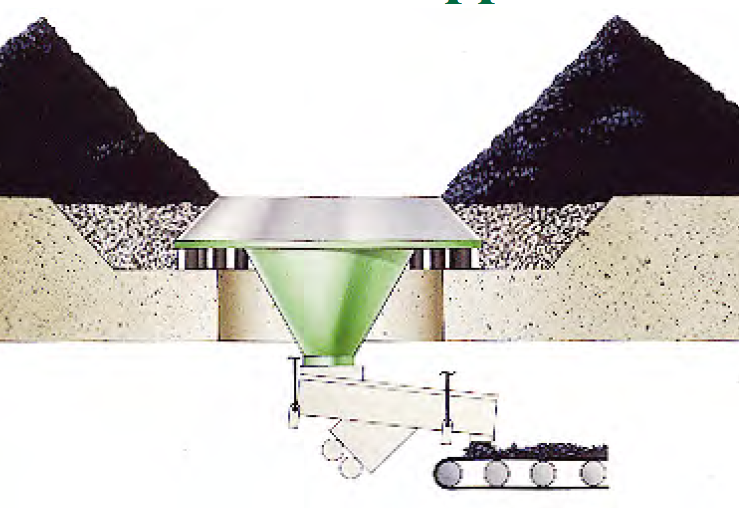
Fluidizable powders such as Portland cement, fly ash, powder alumina and pulverized stone require different approaches. Figure 3 illustrates a storage silo where the center of the storage has an inverted cone. Depending on the size of storage capacity, a fully fluidized floor such as the one shown in Figure 4 may be more economical.
Figure 3. Ibau Style Inverted Cone for Fluidizable Powders

Figure 4. 30k (live) cuM FA Storage Dome
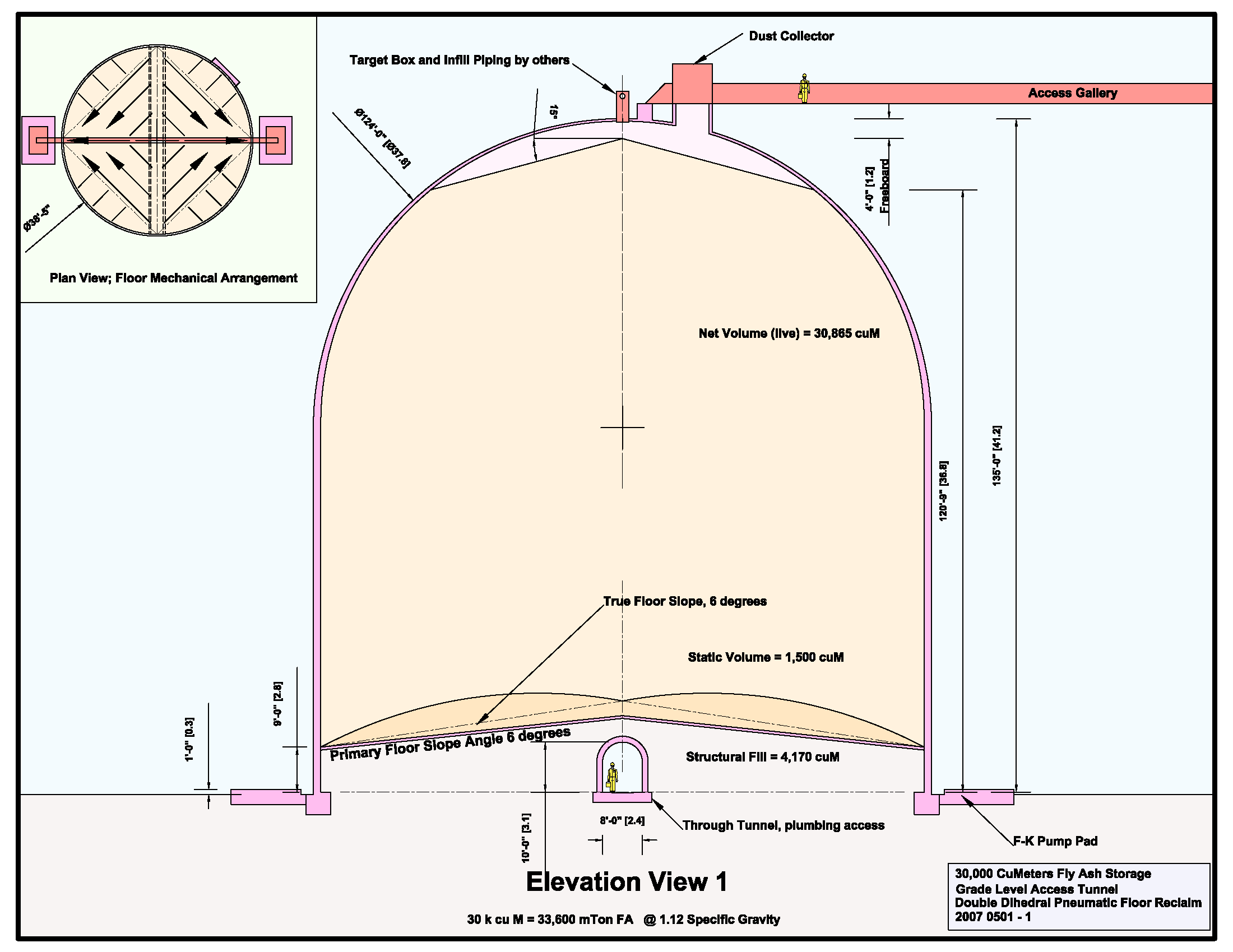
Alternatively, a sweep screw system (Figure 5) may be used to reclaim some types of material. Sweep screws have limitations on how much material can be stored above the screw and how large a diameter the storage structure can be.
Figure 5. Wooden Pellet Storage
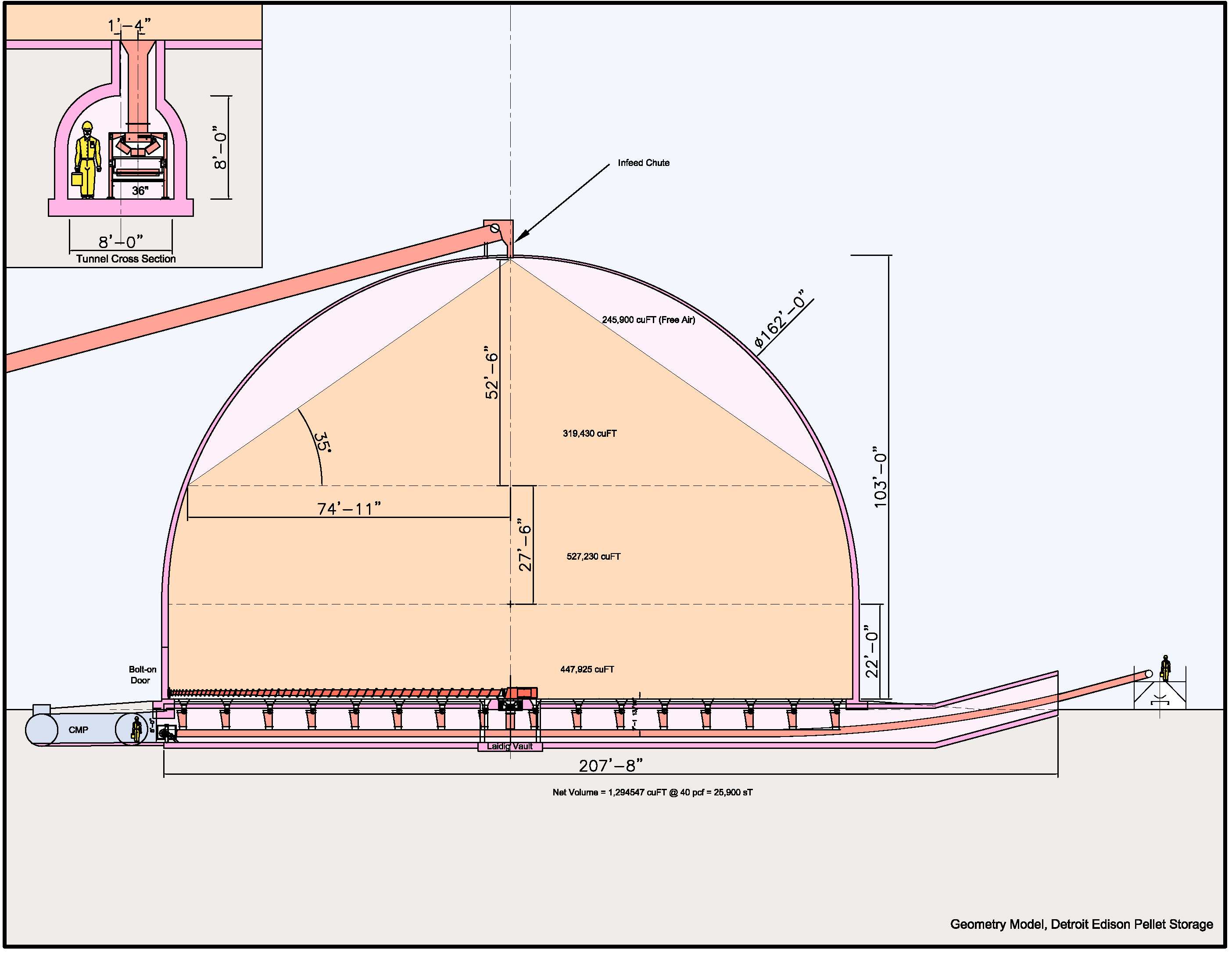
Silo packs (Figure 6) have a high center of mass and loads concentrated over a relatively small footprint. Typical silos demand structural engineers to design expensive deep foundations (piling).
Figure 6.Cement Silos, Buffalo Island, Housten, TX
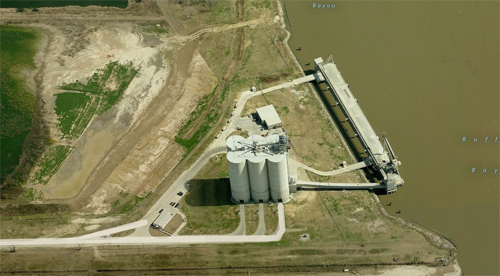
An alternative is a concrete dome structure such as Figure 7, where the center of mass is low and typically the structure and mechanical withdrawal systems are purposely designed to allow differential settlement (eliminating deep foundation costs in unstable soils).
Figure 7. Dome in Port of Tampa (Cement)
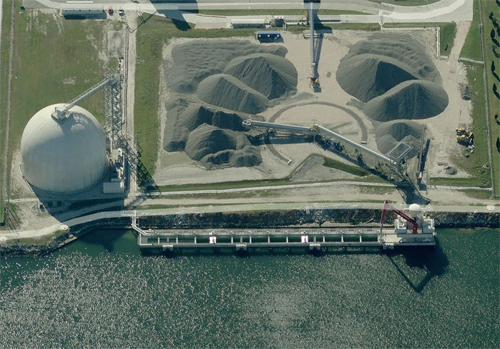
Most of the above mentioned storage systems require mechanical systems for withdrawal. Optimizing the storage footprint (for example a silo or dome diameter) require value-engineering by an experienced engineer in the design of these structures. The cost of tall silos with gravity discharge vs. short and wide ones with more mechanical systems and with withdrawal tunnels must be part of a study to evaluate both the technical and economical factors which will lead to a sound decision in selecting the type of storage facility.
The diameter consideration must take into account the site conditions where the storage is to be placed. For example, Figure 8 shows a bulk storage facility at a dock-face. The deep water ship-mooring next to the dock-face will require substantial deep foundations to carry the weight of the storage structure. Would it be a better choice to evaluate a longer conveying system so that the piling requirements were lower or eliminated?
Figure 8. Bulk Storage Facility at Dock Face

Bulk materials storage is a highly specialized field and in this article we have only touched on a few issues. Proven technologies are available for your specific needs. The cost to meet your storage requirements is paramount to the economic feasibility of your project.
About the Author(s)
Thomas W. Hedrick, P.E.
Mr. Hedrick is a Senior Project Consultant at PEC Consulting Group. He specializes in materials handling, has been in manufacturing and engineering for 40 years, holds seven U.S. patents, and has written several dozen technical papers for various magazines and conferences around the world. Mr. Hedrick maintains a passion for excellence in client relations and project execution.
PEC Consulting Group LLC | PENTA Engineering Corporation | St. Louis, Missouri, USA
How can we help you? Get in touch with our team of experts.
